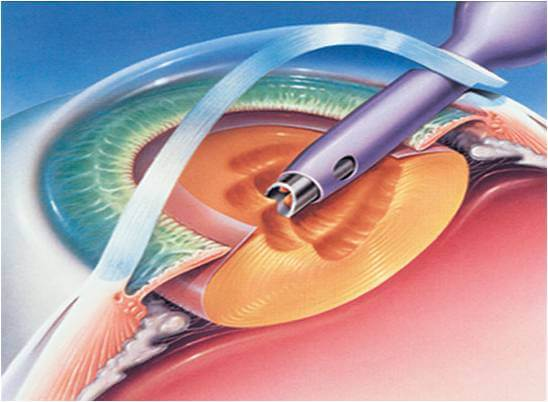A cataract is a clouding of the eye’s natural lens, leading to blurry or dim vision. It typically develops slowly and is more common with age. Colors may seem faded, night vision deteriorates, and glare from lights becomes more intense. For many, cataracts can affect daily activities like reading or driving. Though they’re common, they are highly treatable, making early identification crucial. Routine eye exams can help catch cataracts in their early stages before they begin to interfere with quality of life.
When is Cataract Surgery Needed?
Surgery is usually recommended when cataracts start affecting daily functioning. You might notice difficulty seeing in low light, needing brighter lights to read, or experiencing glare from headlights at night. While glasses may help in early stages, they can’t correct vision once the cataract worsens. A thorough eye examination by an ophthalmologist can help determine when surgery is necessary. It’s not just about age,it’s also about how much the cataract is interfering with your ability to live safely.
Types of Cataract Surgery Procedures
There are two main types of cataract surgery:
- Phacoemulsification (phaco): A small incision technique using ultrasound to break up the lens.
- Extracapsular surgery: Used for advanced cataracts, involves a larger incision to remove the cloudy lens.
Both types involve replacing the clouded lens with an artificial intraocular lens (IOL). Today, most surgeries are done with phaco due to its faster recovery and fewer complications. The choice of surgery depends on the severity of the cataract and the patient’s specific eye health conditions.
How to Prepare for Cataract Surgery
Preparation involves a pre-operative eye exam, including measurements to determine the right IOL power. Your doctor may advise you to stop certain medications temporarily. Eye drops to prevent infection and reduce inflammation may also be prescribed. Avoid eating or drinking for several hours before the procedure. Most importantly, plan for someone to accompany you home after surgery. Following your surgeon’s instructions helps reduce risks and ensures a better recovery.
Step-by-step Overview of The Surgical Process
Cataract surgery is a relatively quick, outpatient procedure typically lasting 15 to 30 minutes. After administering local anesthesia, a small incision is made in the eye. The clouded lens is then emulsified and removed. A clear artificial lens (IOL) is inserted to restore vision. The incision is usually self-healing and does not require stitches. Most patients remain awake but comfortable during the procedure. You’ll rest briefly after the surgery and receive protective eyewear and post-operative care instructions before going home.
What to Expect During the Procedure
Patients can expect a painless experience. You’ll be awake, but your eye will be numbed with drops or an injection. You might see light or movement, but no discomfort. The procedure is performed under a microscope with precision tools. The surgeon works quickly and efficiently to remove the cloudy lens and place the IOL. The entire process is over before most patients even realize it began. It’s normal to feel slightly uneasy afterward.
Bandra has a mix of advanced medical infrastructure and experienced specialists, and is quickly becoming a hub for reliable eye care. The area is home to well-established eye hospitals equipped with the latest technology and highly trained surgeons who offer treatment plans. For anyone considering cataract surgery, Cataract Surgery in Bandra is a good option with trusted medical professionals.
Recovery Timeline After Cataract Surgery
Recovery is generally smooth. Most people notice clearer vision within a few days, though full healing may take 4 to 6 weeks. Minor discomfort like itching or a gritty feeling is common but fades quickly. Your doctor will schedule follow-up visits to monitor healing. You may need to wear a protective shield while sleeping and use prescribed eye drops regularly. It’s important to avoid rubbing your eyes, lifting heavy objects, or exposing the eye to dust during early recovery.
Tips for Smooth and Safe Healing
- Use prescribed eye drops consistently to prevent infection and inflammation.
- Wear sunglasses when going outside to protect from UV light.
- Avoid water or soap getting into the eye while bathing.
- Refrain from makeup and strenuous activity for a few weeks.
- Attend all follow-up appointments even if your vision feels fine.
Risks and Potential Complications to be Aware of
Although rare, complications can occur. These include:
- Eye infection
- Swelling or inflammation
- Posterior capsule opacification (a clouding of the lens capsule)
- Retinal detachment
Choosing an experienced surgeon and following post-operative instructions significantly reduces these risks. If you have underlying eye conditions like glaucoma or diabetic retinopathy, your risk may be slightly higher. Always inform your surgeon of your complete medical and eye health history before the procedure.
Cost of Cataract Surgery in India and Insurance Coverage
The cost of cataract surgery in India varies based on the hospital, city, and type of lens used. On average, it ranges from ₹15,000 to ₹80,000 per eye. Many health insurance policies cover cataract surgery, but coverage specifics may differ. It’s important e to check with your insurer beforehand. Premium lens implants may not always be fully covered. Always ask your eye surgeon or hospital for a detailed estimate and clarification about what’s included in the cost.

